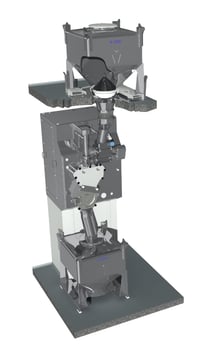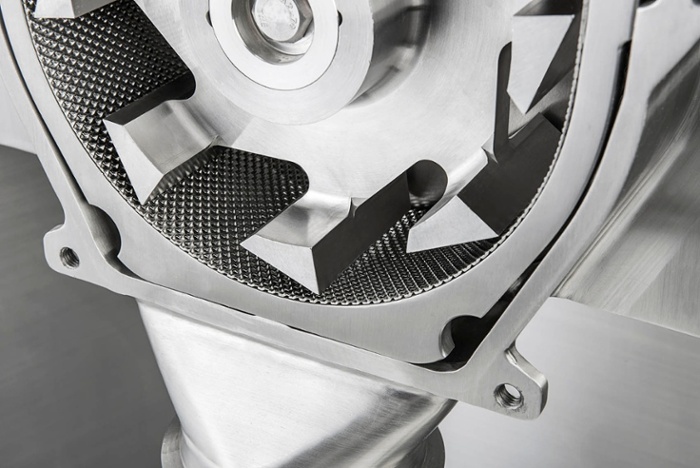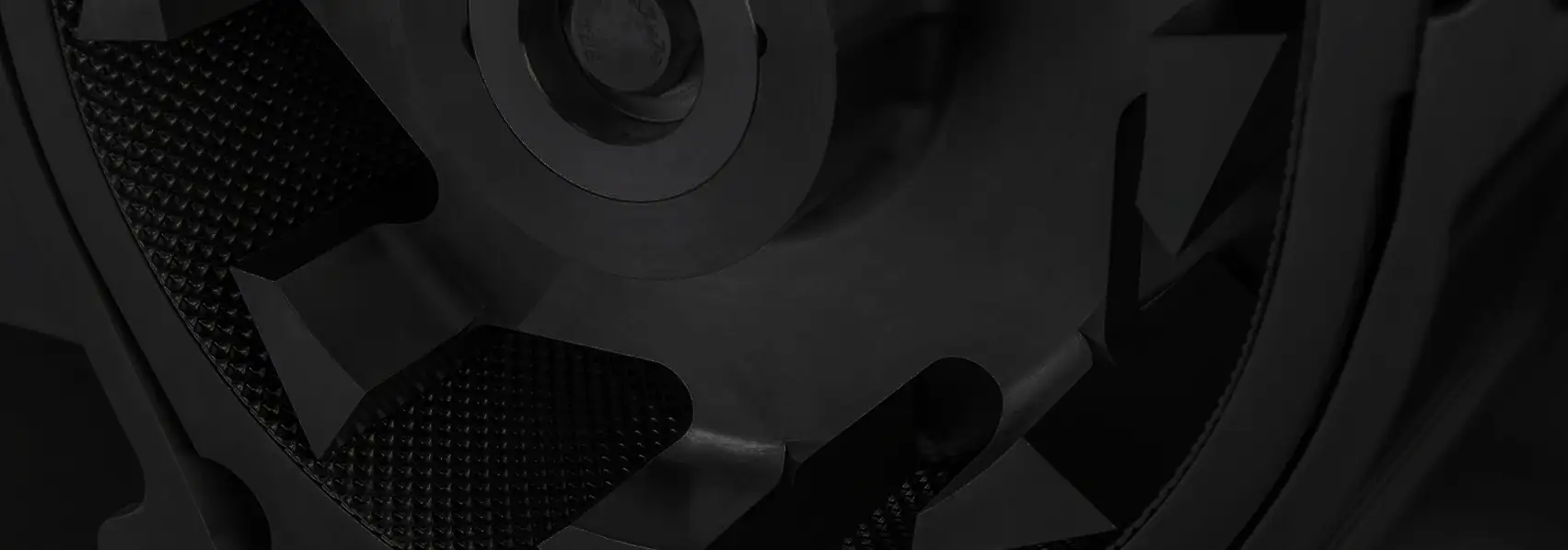Before we look at the benefits, let’s first answer the question...
What are the basic principles of the dry granulation method and roller compaction technology?
Simply stated, it is one of the process steps in the pharmaceutical OSD manufacturing process, where raw ingredient powders are conditioned ready to be formed into tablets. It is a granulation method that takes the dry, primary ingredient powders and compresses these smaller particles together into larger granules, in order to lock-in ingredient ratios and ensures the right amount of excipient is included in every single tablet, as well as create the granule properties necessary for feeding the subsequent process steps.
These larger granules are created with Roller Compactor equipment that compresses the powders between two rotating rolls to create a compact/ribbon. This is then milled to create a powder at a target particle size and distribution, that will flow through to the tablet presses, where it is compacted into a tablet.

The Pharmaceutical Dry Granulation method
Pharmaceutical dry granulation is the leanest method for conditioning powders. Because it is a continuous manufacturing process, there is no need to construct batch sizes to meet equipment constraints. With few process variables, it is relatively simple to validate, optimize and scale.
Compared to the commonly used practice of Wet Granulation, it is a more economical methodology for granulating powders and is more suitable for use on heat or moisture-sensitive compounds. Compared to Direct Compression it removes the issues of blend segregation and flowability that can result in sub-standard tablets.
The advantages of the Dry Granulation method
Improved powder flow as the ideal particle size distribution can be attained by adjusting the compaction and milling process. With a better granular mix, material flows more easily, which means that conveying and feeding into downstream processes become trouble-free, as caking and bridging are eliminated.
Enhanced compressibility at the tablet pressing stage can be achieved as the powders are conditioned correctly. The goal of Dry Granulation is to compress the powder but leave some compactibility so that the powder can still be formed in a tablet press.
Control particle hardness by adjusting the compression and milling stage parameters. Crush strength and disintegration can be important properties that are brought under control.
Control dissolution and dispersion rates by modifying hardness and particle size distribution.
Lower equipment CapEx costs. Dry Granulation does not use as many pieces of equipment as the Wet Granulation process. Dry Granulation only involves a Roll Compactor, mill & sieve and charging and discharging equipment. Whereas, Wet Granulation involves a high shear granulator, fluid bed drier, mills & sieves, charging and discharging equipment, which can run into multiple millions of dollars and takes up a lot of factory space, consumes significant amounts of energy, and requires significant manpower to operate the system.
Scalability is much more straightforward with Dry Granulation – results achieved on the lab or pilot scale models can be replicated at the production scale.
Read more: How to optimise the manufacture of tablets using the dry granulation method
The disadvantages of the Dry Granulation method
With any manufacturing process step, there will be some disadvantages, it won’t work for every single type of powder or drug.
Raw material properties matter – the characteristics of the API and excipient powders are important. They must compress under pressure to form a solid compact. This can be tested on bench-scale equipment to ensure the formulation has the desired compressibility characteristics.
Heat-sensitive materials can be poor candidates. Because Dry Granulation doesn’t require a drying step, it is possible the heat applied to the product is reduced compared to other methods. However, there can be situations, even with Dry Granulation, where the powder can heat slightly from the pressure of the rolls. This can typically be mitigated by using a roll cooling feature.
When should I choose Dry Granulation compared to Wet Granulation or Direct Compression?
Specifying Dry Granulation will depend on the characteristics of the powders used in the manufacturing process. The table below shows an outline of which powder conditioning method to choose depending on the flowability and compressibility of the OSD powders. As a broad overview, materials must easily blend together
| COMPRESSIBILITY | |||
| FLOWABILITY | HIGH | LOW | |
| HIGH | Direct Compression | Wet Granulation | |
| LOW | Dry Granulation | ||
Dry Granulation is an inherently continuous process and exhibits improved robustness, content uniformity, scalability and are compatible with monitoring during the manufacturing process, which lends itself to being suitable for continuous manufacture.
Where does Fitzpatrick fit?
Whilst we said that Dry Granulation as a process is relatively straightforward, compared to the alternative processes, there are still a number of pieces of equipment that need to be brought together to create a system. It isn’t just a case of buying a Roller Compactor and plugging it in.
The system needs to be designed and the parameters adjusted to create the ideal powder characteristics that will make you successful in your OSD process.
Read: How to select a roller compactor to meet your process needs.
Our team of experts are on hand to help and guide you along the way and we have innovative designs that help ensure you achieve great results. Fitzpatrick’s CCS Series of Roller Compactors are fully contained and scalable from lab to production. We can help you select the right model and get it set up to fulfill your application requirements.
Don’t just take our word for it - see how we helped a healthcare provider in India who had prolonged batch times, and particle size inconsistencies that were negatively affecting their dry granulation process.
You can also learn more about Fitzpatrick's Roller Compaction Equipment for Pharmaceutical Manufacturing here.


